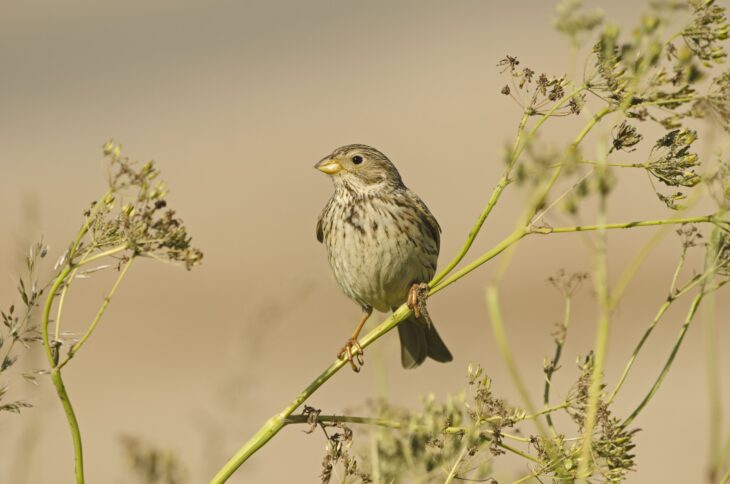Harnessing Nature-Based Solutions in Scottish Agriculture
At the Scottish Wildlife Trust, we firmly advocate for nature-based solutions as essential tools in addressing the nature and climate emergencies while safeguarding the natural resources crucial for producing food. This blog is the first in a series which builds on our research about increasing nature-based solutions in Scottish agriculture.
Farming and the climate and nature emergencies
Most of Scotland’s land use, around 80%, is agriculture. Farmers, crofters and land managers are on the frontline of climate change and nature loss, and some farming practices contribute to the climate and nature crises. Despite the deep cultural links with farming, we must face reality, it is the sector with the second highest emissions in the country and has heavily contributed to the loss of Scotland’s biodiversity, despite notable good work on nature and climate by numerous farmers.
Government commitments and programmes
The Scottish Government’s 2024/25 Programme for Government includes tackling the climate and nature crises as a top priority. Its commitment to introduce a Natural Environment Bill in the next year will put us in a much better position to achieve the international target of restoring 30% of land and seas by 2030. Legislation to enable the setting and delivery of five-yearly carbon budgets, another promise in the Programme for Government, will also help drive action to meet net zero targets.
Whilst these are positive developments, unfortunately, the Scottish Government has rowed back on two major commitments which would provide nature-based solutions to a whole host of problems we face as society. The 2020 Climate Change Plan update committed to 18,000ha of new woodland creation and to 20,000ha of peatland restoration in 2024/25. Yet the 2024/25 Programme for Government sets both peatland restoration and woodland creation targets of 10,000 ha, considerably lower than prior ambitions.

Credit: David Tipling/2020VISION
The potential of nature-based solutions
There is great potential for nature-based solutions across Scotland’s uplands and lowland farming systems, from peatlands and woodlands to grasslands and arable land. From wetland restoration to establishing riparian buffer strips, they can increase farm business resilience and enhance farm productivity, whilst also mitigating climate change and helping nature to recover.
Given their potential, understanding how the uptake of nature-based solutions can be enabled is vital for the success of wider government policy. This requires strong drivers, clear signalling, robust regulations and meaningful financial support.
Bridging the gap
The Vision for Scottish Agriculture, announced in March 2022, remains a guiding Scottish Government principle which the Trust supports, but we believe it is at odds with the Agricultural Reform Programme. This Programme appears to perpetuate an outdated system of farming support, with a tiered structure that replicates the previous Common Agricultural Policy.
For the agricultural sector to contribute effectively to national climate and nature targets, it must operate with clearly defined sectoral targets and budgets. Proposed carbon budgets should align with Just Transition sector plans and must be complemented by a nature budget that reflects the goals outlined in the forthcoming Natural Environment Bill.
Research indicates that approximately £1.2 billion annually is necessary to meet Scotland’s environmental land management commitments. In stark contrast, the current annual expenditure on agri-environmental schemes is between £30-40 million, and recent cuts to the Nature Restoration Fund further hinder efforts to deliver nature and climate recovery measures, including nature-based solutions, on farmland.
A call for bold action
To deliver the Vision for Agriculture, and its own climate and nature commitments, the Scottish Government needs to be much bolder. The way forward does not lie with a reinvention of the status quo. The proposed Agricultural Reform List of Measures, or the actions farmers and land managers could get paid to do, are stated as being ‘tried and tested’ – yet we need radical change, alongside supporting what we know works.
At the Scottish Wildlife Trust, we are committed to supporting a sustainable future for land management and farming. Over the coming months, we will share our insights and innovative approaches to harnessing nature for the benefit of people, wildlife and climate through nature-based solutions on farmland.
We’ll delve into how these solutions can be integrated within the Agricultural Reform Programme, with a particular emphasis on enhancing riverbanks and river systems. Our efforts will build upon our proposals in nature-based solutions in Scottish Agriculture, our ambition to create a network of thriving riverbank woodlands and healthy river ecosystems through the Riverwoods initiative, and our pioneering work in species support and reintroductions.
Together, we can cultivate a resilient agricultural landscape that not only meets our food production needs but also prioritises environmental stewardship for generations to come. Stay tuned as we explore this critical intersection of agriculture and nature – or get in touch to find out more.
Help protect Scotland’s wildlife
Our work to save Scotland’s wildlife is made possible thanks to the generosity of our members and supporters.
Join today from just £3 a month to help protect the species you love.
Preface
At the Scottish Wildlife Trust, we firmly advocate for nature-based solutions as essential tools in addressing the nature and climate emergencies while safeguarding the natural resources crucial for producing food. …
